When it comes to cooking, having the right tools can make a world of difference.
A food processor is a versatile and powerful kitchen appliance that can save time and effort in the kitchen and will make you feel like you have your own personal sous chef.
However, with so many options available, choosing the best food processor can be overwhelming.
In this article, we will guide you through the process of choosing a food processor that meets your needs.
We will cover the key features to consider, specific tasks and their requirements, maintenance and cleaning, budget considerations, and additional tips for buying a food processor.
Whether you are an experienced cook or just starting out, we will provide you with the information you need to make an informed decision.
Key Takeaways
- Understanding the key features of a food processor is important when choosing the best one for your needs.
- Different food prep tasks require different types of blades and attachments, so it's important to consider what you will be using your food processor for.
- Maintenance and cleaning are important factors to consider when choosing a food processor, as well as your budget and any additional tips for buying a food processor.
Understanding Food Processors
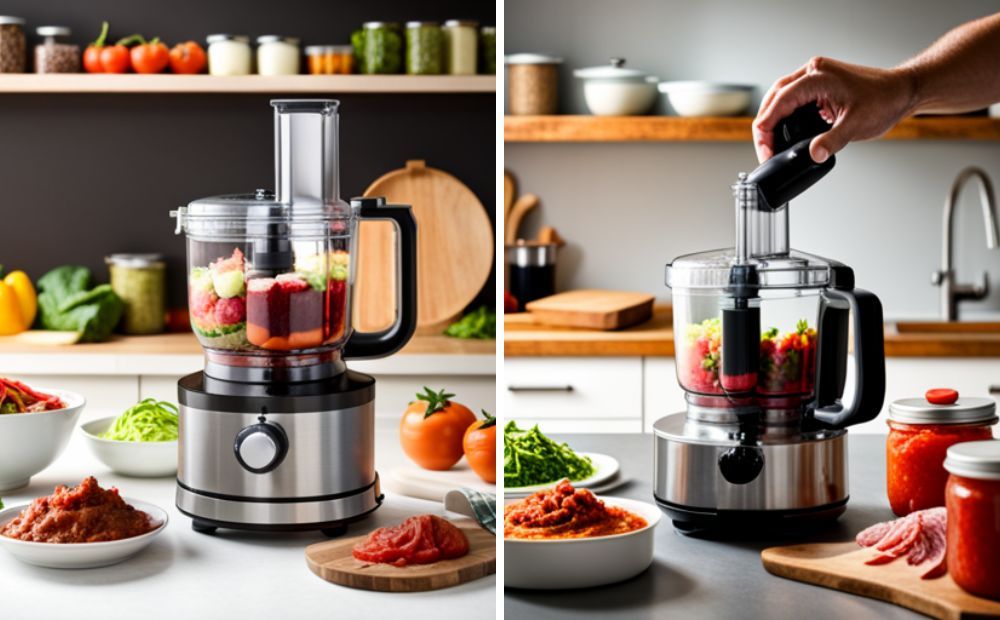
A food processor in use.
When it comes to kitchen appliances, food processors are one of the most versatile tools you can have.
They can chop, slice, dice, knead, and puree, making them essential for many different cooking tasks.
A food processor typically consists of a motorized base that houses the motor and controls, along with a work bowl that sits on top of the base.
The work bowl is where you place the food you want to process, and it comes with a variety of attachments and blades that allow you to perform different functions.
Food processors come in all shapes and sizes, from small 3-cup choppers to large 20-cup versions that could function in a restaurant kitchen.
The size you choose depends on the number of people you typically cook for and the recipes you'll prepare with it.
When choosing a food processor, it's important to consider the following factors:
- Motor Power: The motor is the heart of the food processor, and you want to make sure it's powerful enough to handle the tasks you need it for. Look for a motor that's at least 600 watts for a full-sized processor (9 cups or larger).
- Size/Capacity: As mentioned earlier, food processors come in different sizes. If you regularly cook for a crowd or like to prepare multiple batches of a recipe, you might appreciate larger processors with a capacity of 11 to 16 cups. However, they tend to cost more.
- Attachments/Blades: Different attachments and blades allow you to perform different functions with your food processor. Look for a processor that comes with the attachments and blades you need for the tasks you'll be performing.
- Ease of Use/Cleaning: Food processors can be complex machines, so it's important to choose one that's easy to use and clean. Look for a processor with intuitive controls and dishwasher-safe parts.
- Design/Style: Food processors come in many different designs and styles, so choose one that fits your kitchen decor and personal style.
A food processor is a kitchen essential that can help with many different cooking tasks. When choosing a food processor, consider factors such as motor power, size/capacity, attachments/blades, ease of use/cleaning, and design/style.
With the right food processor, you can save time and effort in the kitchen and create delicious meals with ease.
5 Things to Look for in a Food Processor
Key Features to Consider
When it comes to choosing a food processor, there are several key features that you should consider to ensure that you get the best one for your needs. In this section, we will discuss the most important features to keep in mind when shopping for a food processor.
Power and Motor
The power and motor of a food processor are important factors to consider. A powerful motor will make it easier to process tough ingredients, such as raw carrots or hard cheese. Look for a food processor with a motor that is at least 600 watts. This will ensure that it can handle most tasks with ease.
Size and Capacity
The size and capacity of a food processor are also important considerations. If you cook for a large family or entertain frequently, you may want to choose a larger model with a capacity of 11 to 16 cups.
However, keep in mind that large food processors tend to be more expensive. If you only cook for one or two people, a smaller model or mid sized food processor with a capacity of 4 to 7 cups may be sufficient. Mini food processors are also an option, coming in at a capacity of 1-5 cups.
Attachments and Accessories
Many food processors come with a variety of attachments and accessories, such as slicing and shredding disks, dough blades, and citrus juicers. Consider which attachments and accessories are important to you and choose a model that includes them.
Blades and Disks
The blades and disks of a food processor are crucial for achieving the desired results. Look for a food processor that comes with a variety of blades and disks for different tasks, such as slicing, shredding, chopping, and pureeing. The S-blade is the most important blade and is used for most tasks.
Speed Settings
Most food processors come with multiple speed settings, which can be useful for different tasks. Look for a model with at least two speed settings, a low speed for delicate tasks like chopping herbs, and a high speed for tougher tasks like kneading dough.
By considering these key features, you can choose the best food processor for your needs. Keep in mind that a higher price does not always mean better quality. Look for a model that has the features you need at a price you can afford.
Specific Tasks and Their Requirements
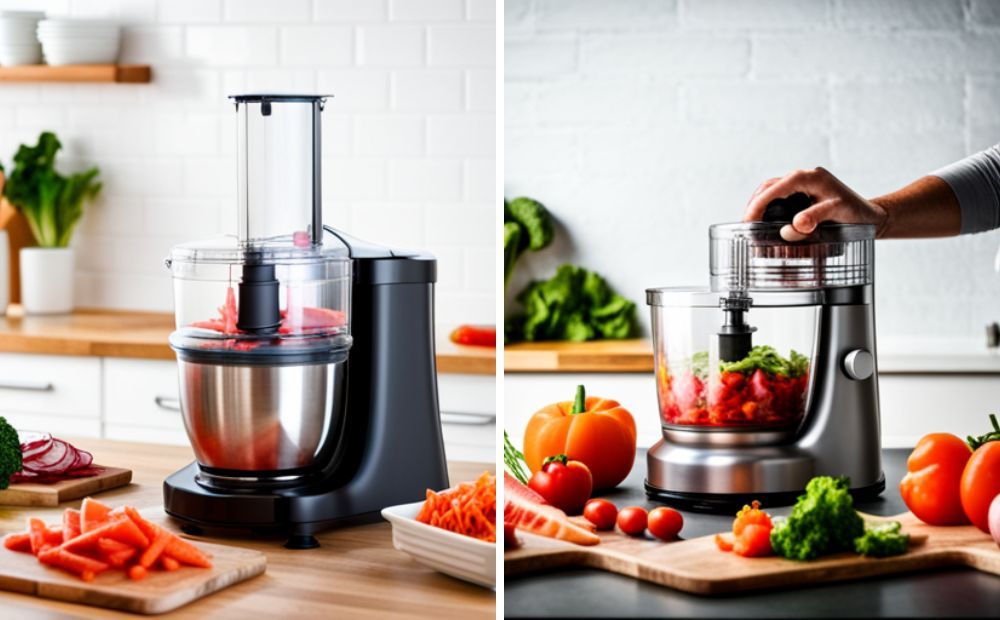
A food processor chopping and dicing for food prep.
When it comes to choosing a food processor, it's important to consider the specific tasks you'll be using it for. Different tasks require different features and capabilities. Here are some common tasks and their requirements:
Chopping and Dicing for Food Prep
Chopping and dicing vegetables, nuts, and other ingredients require a sharp blade and a large feed tube. Look for a food processor with a sharp S-shaped blade and a feed tube that can accommodate larger ingredients like carrots and onions. A pulse function is also helpful for achieving the desired texture.
Knead Bread Dough
Kneading dough requires a powerful motor and a dough blade. Look for a food processor with at least a 600-watt motor and a dough blade that can handle heavy doughs. A large capacity bowl is also helpful for making larger batches of pizza dough or bread.
Shredding and Grating
Shredding and grating cheese, vegetables, and other ingredients require a shredding/grating disc. Look for a food processor with a variety of shredding/grating discs for different textures and sizes. A large feed tube is also helpful for shredding larger ingredients like veggies.
Blending and Pureeing
Blending and pureeing ingredients for smoothies, soups, hummus, pesto, and other dishes require a powerful motor and a sharp blade. Look for a food processor with a high wattage motor and a sharp blade that can blend and puree ingredients to a smooth consistency. A large capacity bowl is also helpful for making larger batches of smoothies or soups.
Overall, when choosing a food processor, consider the specific tasks you'll be using it for and look for a model with the appropriate features and capabilities. Don't forget to also consider the size and capacity of the food processor to ensure it meets your needs.
Maintenance and Cleaning
Maintaining and cleaning your food processor is crucial to ensure its longevity and optimal performance. Here are some tips to keep your food processor in top shape:
Cleaning
Cleaning your food processor after each use is important to prevent food buildup and bacteria growth. Most food processors have removable parts that can be easily washed with soap and warm water. Some parts may also be dishwasher-safe, but make sure to check the user manual first.
The blades and motor base should not be submerged in water and should be wiped clean with a damp cloth. For stubborn stains, you can use a soft-bristled brush to gently scrub the parts. Avoid using abrasive cleaners or scrubbers that can damage the plastic or metal parts.
Maintenance
Regular maintenance is necessary to ensure your food processor continues to work efficiently. Here are some tips to maintain your food processor:
- Check the blades regularly for signs of wear and tear. Dull or damaged blades can affect the performance of your food processor and may need to be replaced.
- Check the motor base for any signs of damage or wear. If you notice any cracks or damage, stop using the food processor immediately and get it repaired.
- Lubricate the motor base and blades as per the manufacturer's instructions to ensure smooth operation.
- Store your food processor in a dry and cool place away from direct sunlight and moisture.
Easy to Use
When choosing a food processor, look for one that is easy to use and clean. A food processor with simple controls and removable parts that are dishwasher-safe can save you time and effort in the kitchen.
Manual
Always refer to the user manual for specific instructions on cleaning and maintenance. The manual will also provide information on which parts are dishwasher-safe and which parts should be hand-washed.
By following these tips, you can ensure your food processor stays in top shape and continues to provide you with delicious meals for years to come.
Budget Considerations
When it comes to choosing a food processor, budget is an important consideration. The good news is that there are plenty of affordable options available on the market today.
We believe that you don't need to spend a fortune to get a quality food processor that meets your needs.
One of the most important things to keep in mind when considering your budget is that the price of a food processor can vary widely depending on its size, features, and brand.
Generally speaking, smaller food processors are more affordable than larger ones. If you're looking for a basic model that can handle simple tasks like chopping and pureeing, you can find a good option for under $50.
However, if you're looking for a more advanced food processor with additional features like shredding and slicing discs, you can expect to pay a bit more. These models can range in price from $100 to $300 depending on the brand and features.
Another important factor to consider when it comes to budget is the cost of replacement parts. Over time, the blades and other parts of your food processor may wear out and need to be replaced.
Before making a purchase, it's a good idea to research the cost of replacement parts for the model you're considering.
In addition to the initial cost of the food processor and replacement parts, you should also consider the cost of operating the appliance. Some models may use more electricity than others, which can add up over time.
It's worth taking a look at the energy efficiency ratings of different models to see which ones are the most cost-effective to operate.
Overall, we believe that it's possible to find a quality food processor that fits within your budget.
By considering factors like size, features, and operating costs, you can make an informed decision that meets your needs without breaking the bank.
Additional Tips for Buying a Food Processor
The Biggest Mistakes Everyone Makes With Food Processors
When it comes to buying a food processor, there are a few additional tips that can help ensure you make the right choice for your needs. Here are some things to keep in mind:
Consider Your Needs
Before you buy a food processor, it's important to think about what you'll be using it for. Are you a home cook who wants to chop vegetables quickly and easily?
Or do you need a more versatile machine that can handle everything from pureeing soups to kneading dough? By considering your needs, you can choose a food processor that will work best for you.
Trust Reviews
When you're looking to buy a food processor, it's important to read reviews from other customers. This can help you get a sense of how well the machine performs, how noisy it is, and how easy it is to clean. Look for reviews from people who have used the machine for the same tasks you plan to use it for.
Look for Versatility
A good food processor should be versatile enough to handle a variety of tasks. Look for a machine that comes with a range of attachments, such as a shredding disc, a slicing disc, and a dough blade.
This will allow you to use your food processor for a range of tasks, from making salsa to kneading bread dough.
Consider Noise Levels
Some food processors can be quite noisy, which can be a problem if you have a small kitchen or if you like to cook early in the morning or late at night.
Look for a machine that has a low noise level, or consider using earplugs or noise-cancelling headphones if you're sensitive to noise.
Buy from a Reputable Brand
When you're buying a food processor, it's important to choose a machine from a reputable brand.
This will help ensure that you're getting a high-quality machine that will last for years. Look for brands that have a good reputation for making durable, reliable appliances.
By keeping these additional tips in mind, you can choose a food processor that will meet your needs and help you cook up a storm in the kitchen!
In the market for a food processor for small spaces? Check out our article for our top picks for mini food processors.
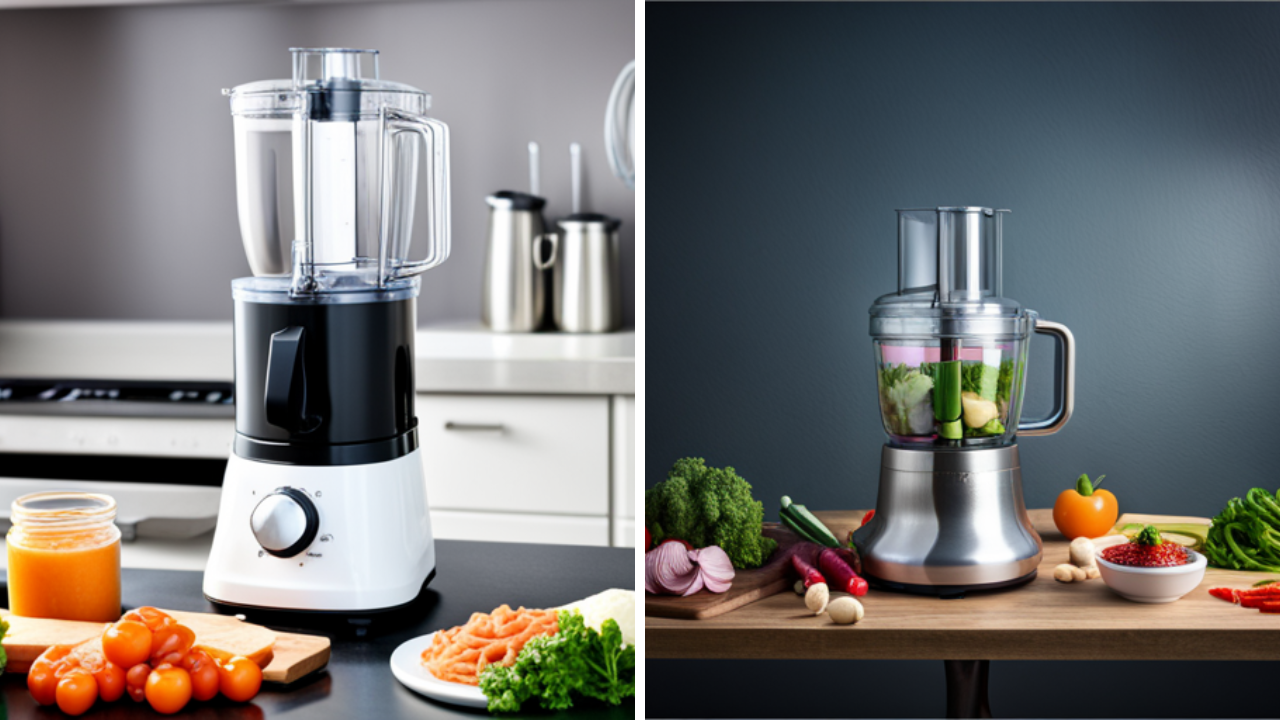
Other articles we have done on food processors that you may enjoy:
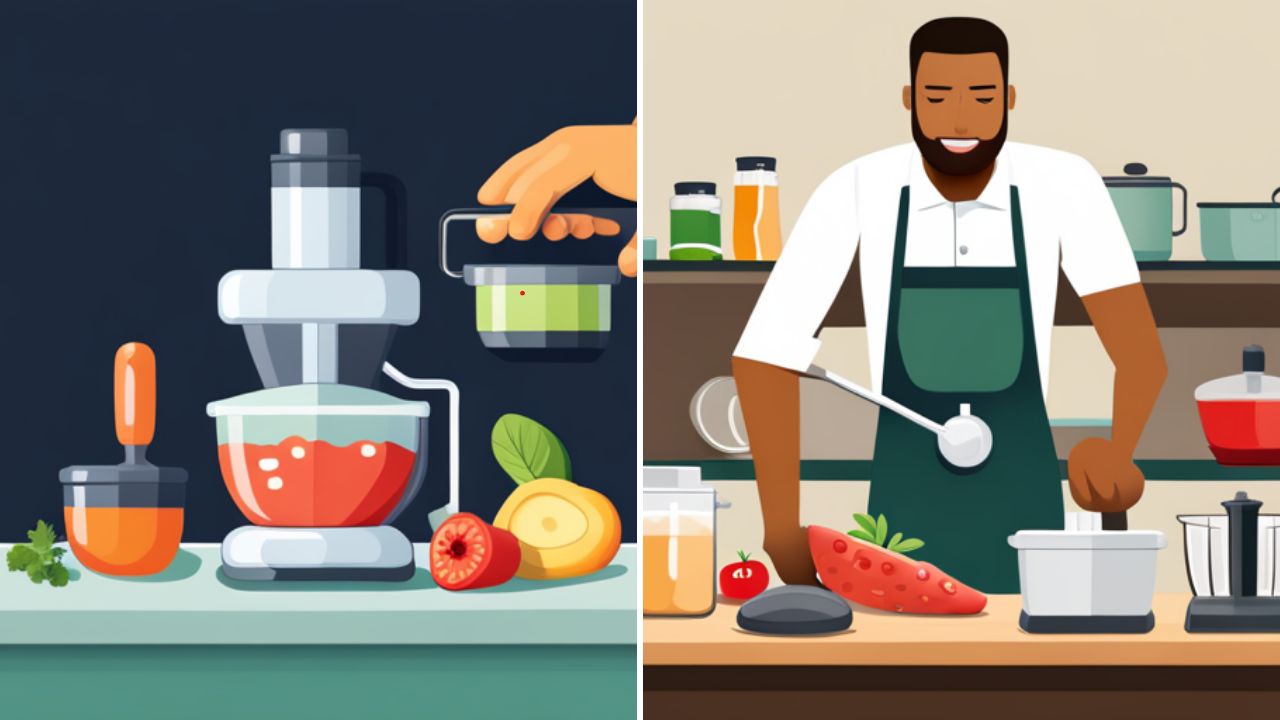
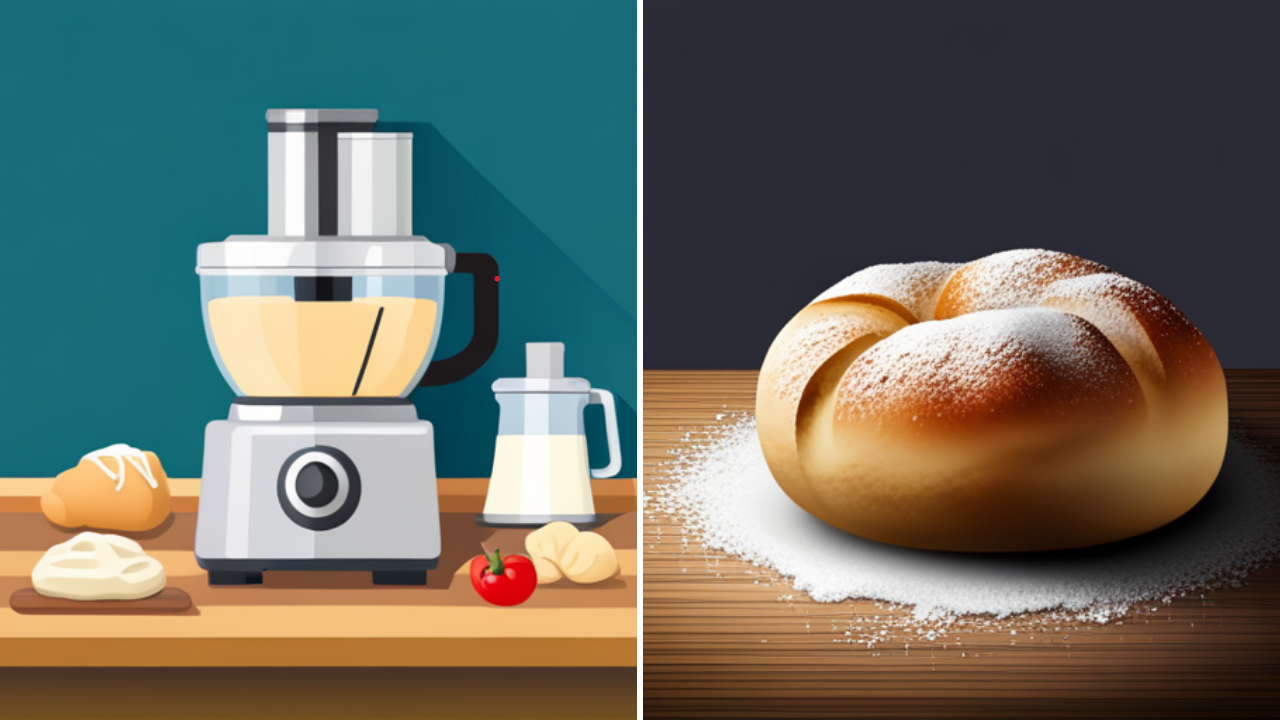
Frequently Asked Questions
What size food processor is right for me?
The size of the food processor you need depends on your cooking needs. If you typically cook for a small family or prepare meals for yourself, a 3-cup or 4-cup food processor should suffice. However, if you cook for larger groups or like to meal prep, a larger 9-cup or 11-cup food processor may be more suitable.
What to look out for when buying a food processor?
When buying a food processor, there are several things to consider. Firstly, consider the size of the food processor and whether it will fit in your kitchen. Secondly, consider the power of the motor. A motor with at least 600 watts is recommended for a full-sized processor. Thirdly, consider the attachments that come with the food processor.
How many watts should a food processor have?
For a full-sized processor, we recommend a motor that's at least 600 watts. However, smaller food processors may require less power.
Is it important for a food processor to be dishwasher safe?
While it's not essential for a food processor to be dishwasher safe, it can make cleaning up easier. Dishwasher safe parts can be easily removed and cleaned in the dishwasher, saving you time and effort.
What are the best brands for professional food processors?
There are several brands that are known for producing high-quality professional food processors. Some of the most popular brands include Cuisinart, KitchenAid, and Breville.
What are the differences in sizes between Cuisinart food processors?
Cuisinart food processors come in a range of sizes, from 3-cup mini processors to 20-cup commercial processors. The size you choose depends on your cooking needs. The mini processors are suitable for small tasks, while the larger processors are better for larger tasks such as making dough or slicing vegetables.










